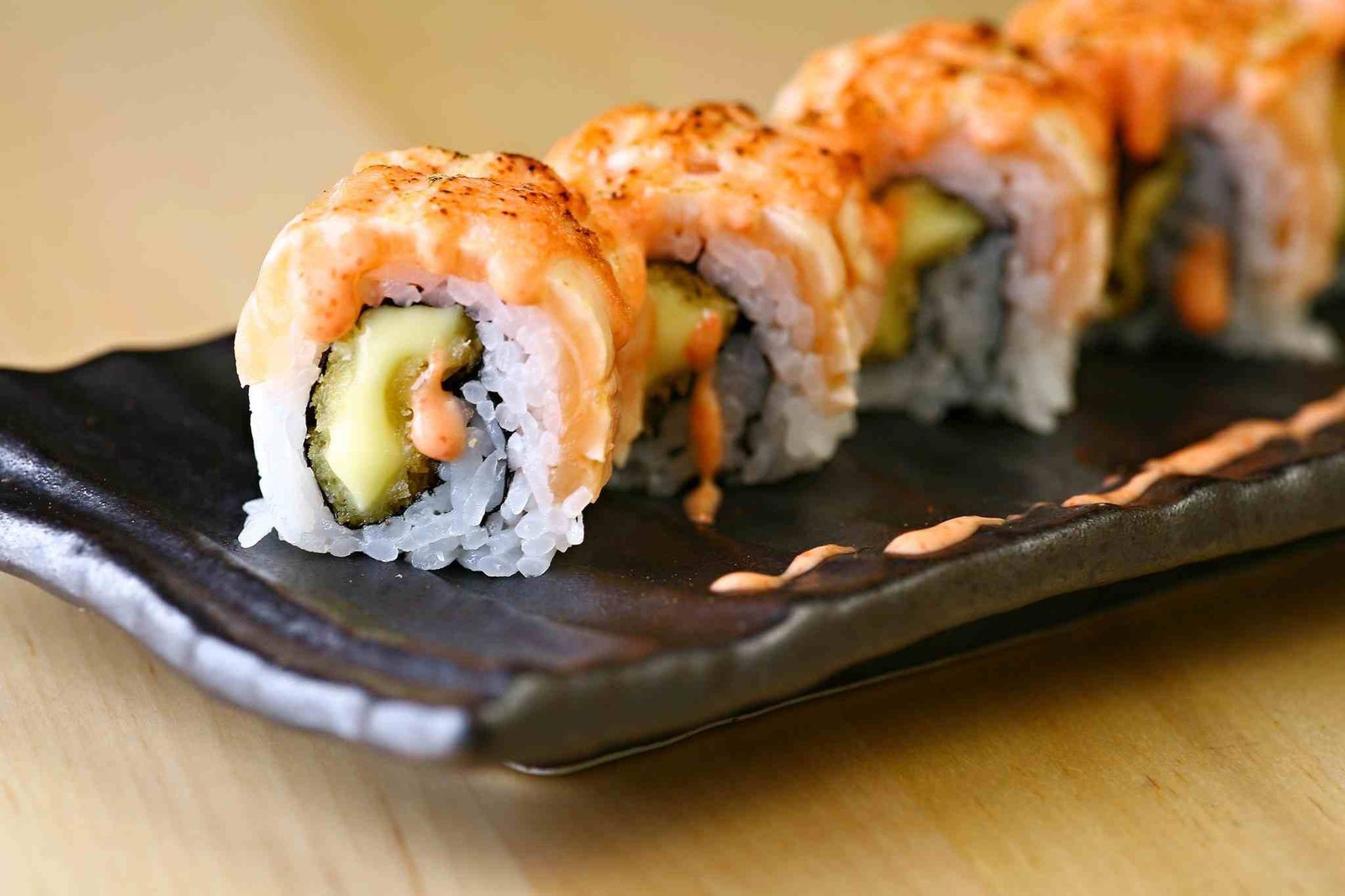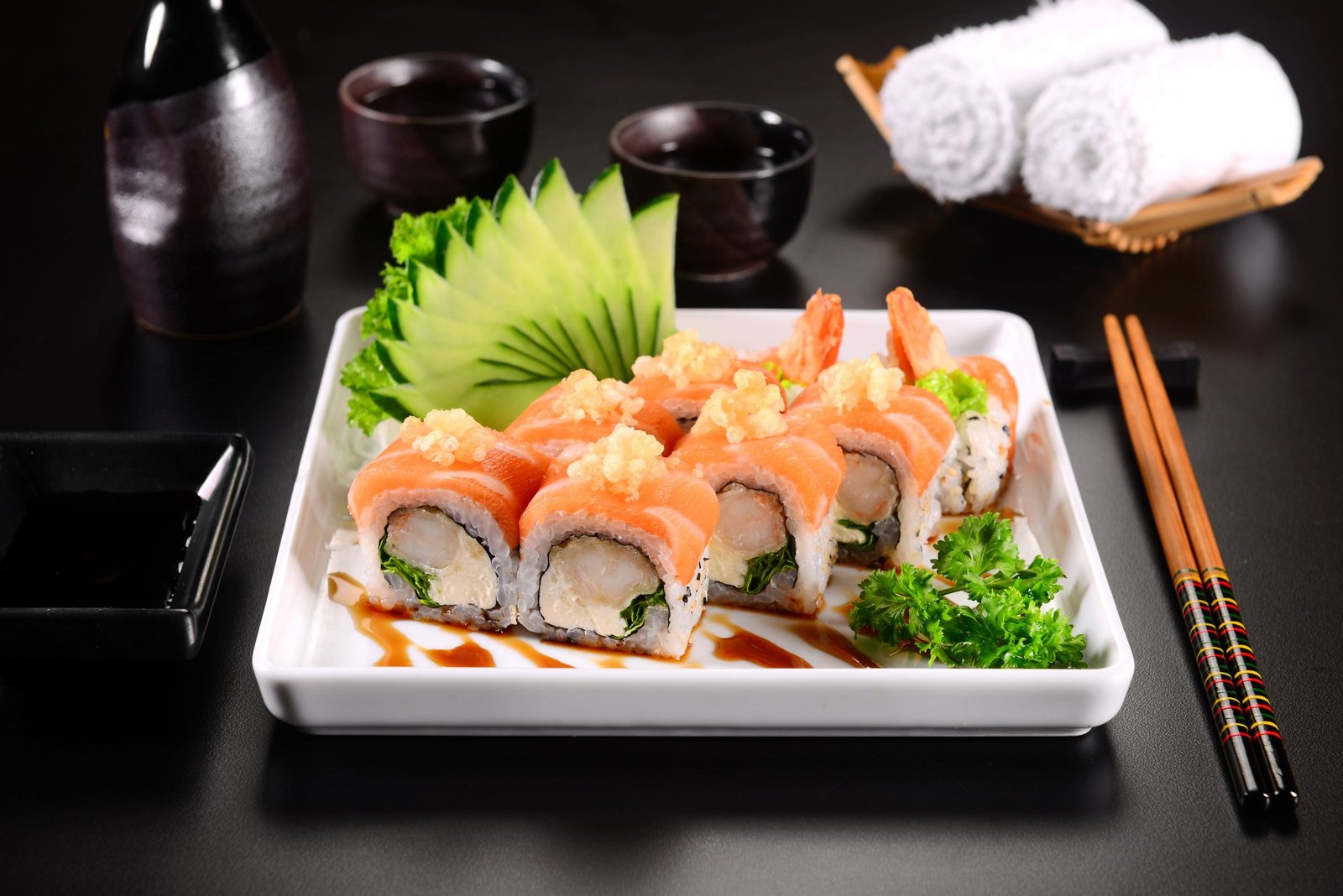The Art of Making Perfect Aburi Sushi at Home: A Personal Journey
If you’re a sushi lover, you probably know that aburi sushi is a game-changer. This partially grilled sushi combines the best of both worlds – the freshness of raw fish with the savory flavor of a slight char. And guess what? You can make this delightful dish right in your kitchen! Here’s a step-by-step guide to help you create perfect aburi sushi at home. Let’s roll up our sleeves and get grilling!
The Quest for Perfection
My journey into the world of Aburi Sushi began with excitement and an underestimation of the art involved. My first attempt was a humbling experience. Armed with a blowtorch and boundless enthusiasm, I ended up with a charred mess that even my dog hesitated to eat. However, this initial failure only fueled my determination to master the technique.
Seeking expertise, I reached out to a friend who works as a sushi chef. His patient guidance and a few insider tips transformed my failures into small victories. Each attempt became a learning experience, gradually building my confidence and skill. The path to perfect Aburi Sushi is paved with persistence, patience, and a willingness to embrace trial and error.

Ingredients You’ll Need:
- Sushi-grade fish (like salmon, tuna, or yellowtail)
- Sushi rice
- Rice vinegar
- Sugar
- Salt
- Soy sauce
- Wasabi
- Nori (seaweed sheets)
- A blowtorch (Yes, you heard that right!)
Step 1: Prepare the Sushi Rice
First things first, you need to get your rice right. Sushi rice is the foundation of good sushi. Here’s a simple recipe to follow:
- Rinse the Rice: Wash 2 cups of sushi rice until the water runs clear. This removes excess starch and prevents the rice from being too sticky.
- Cook the Rice: Use a rice cooker (or a pot if you’re feeling adventurous) to cook the rice. Follow the instructions on the package – we’re aiming for perfectly cooked, slightly sticky rice.
- Season the Rice: While the rice is still hot, mix in a solution of 1/4 cup rice vinegar, 2 tablespoons sugar, and 1 tablespoon salt. Stir gently and let it cool to room temperature.
Tip: Fan the rice while mixing to give it a glossy finish. Plus, it makes you feel like a sushi chef!
Step 2: Prepare the Fish
Sushi-grade fish is crucial here. Make sure you buy it from a reputable source. Slice your fish into thin pieces – about 1/4 inch thick. The slices should be bite-sized, but not too small.
Warning: Slicing fish can be tricky. It’s like trying to cut a marshmallow with a butter knife. Take your time and use a sharp knife!
Step 3: Assemble Your Sushi
- Shape the Rice: Wet your hands (this prevents sticking) and shape small amounts of rice into oval shapes, about the size of your palm.
- Add Wasabi: Dab a tiny bit of wasabi on one side of the fish slices. This adds a kick of flavor and helps the fish stick to the rice.
- Combine: Place the fish, wasabi side down, on the rice. Gently press to adhere.
Step 4: The Fun Part – Torching!
Here comes the aburi magic. Using a blowtorch, lightly sear the top of the fish.
Pro Tip: Move the torch quickly and don’t stay in one spot too long unless you’re aiming for sushi flambé!
You want just a light char – enough to bring out the flavors without cooking the fish through.
Step 5: Garnish and Serve
Drizzle a little soy sauce over your aburi sushi and garnish with thinly sliced green onions or sesame seeds if you’re feeling fancy.
Fun Fact: Aburi sushi pairs fantastically with a glass of chilled sake. Kanpai!
The Art of Searing
Searing the fish is the heart of Aburi Sushi. Here’s how to do it right:
- Prepare the Fish: Slice the fish into thin, even pieces. Ensure they are of uniform thickness for consistent searing.
- Lay the Sushi: Prepare your sushi rice and form it into small mounds. Lay the fish slices over the rice.
- Ignite the Blowtorch: Hold the torch about 2 inches above the fish. Use a sweeping motion to ensure even searing without burning.
- Watch Closely: The fish should turn opaque and slightly browned while retaining its moisture. This process is quick, so keep an eye on it to avoid overcooking.
- Garnish and Serve: Add a touch of soy sauce, wasabi, and pickled ginger. Serve immediately for the best experience.
Creative Variations
One of the joys of making Aburi Sushi at home is the freedom to experiment. Try different types of fish like scallop or eel. Add toppings such as avocado, spicy mayo, or ikura (salmon roe) to enhance the flavors. Using locally sourced ingredients can also add a unique twist and celebrate regional flavors.
The Joy of Sharing
There’s something incredibly satisfying about sharing a homemade culinary masterpiece with loved ones. One memorable evening, I decided to surprise my family with my homemade Aburi Sushi. Their initial skepticism turned into delight as they savored each piece. The joy of seeing their reactions and the communal experience of dining together made all the effort worthwhile.
Final Thoughts
Making aburi sushi at home is not only fun but also incredibly rewarding. Plus, you get to show off your new skills at your next dinner party. Remember, practice makes perfect, so don’t be discouraged if your first batch looks a bit wonky. Even the best sushi chefs had to start somewhere!
So grab your ingredients, unleash your inner sushi chef, and enjoy the delicious world of aburi sushi. Happy grilling!
Ready to start your own Aburi Sushi adventure? Gather your ingredients and tools, and let the journey begin. Share your creations and experiences with us – we’d love to see how you make Aburi Sushi uniquely yours!

My Opinion:
Creating Aburi Sushi at home has not only been a culinary venture but a deeply personal journey for me. At the start, my attempts often bordered on disastrous, yet these moments of failure were just as valuable as the triumphs. They taught me patience, precision, and the sheer joy of embracing a new skill. More importantly, this experience has reinforced my belief that the best meals are those crafted with passion and shared with love. Every piece of sushi tells a story of perseverance and creativity, and I find immense pride and satisfaction in each successful bite.
Suggested: Learn About cake.
FAQ
1. What type of fish is best for Aburi Sushi?
For Aburi Sushi, it’s essential to use high-quality sashimi-grade fish. Common choices include salmon, tuna, and yellowtail, but you can also experiment with other types such as scallop or eel. The freshness and quality of the fish are crucial for achieving the best flavor and texture.
2. Can I make Aburi Sushi without a blowtorch?
While a blowtorch is the traditional and most effective way to achieve the signature sear of Aburi Sushi, you can also use a very hot pan as an alternative. Simply sear the fish quickly on both sides using the hot pan method, being careful not to cook it through.
3. Where can I buy sashimi-grade fish and other ingredients?
Most large grocery stores with a good seafood section will carry sashimi-grade fish and the other ingredients you need. For a wider selection and higher quality, you might want to visit a local Asian grocery store or order from online specialty retailers.
4. What sort of rice should I use for sushi?
For the best texture and flavor, use short-grain Japanese rice, often labeled as sushi rice. Season the cooked rice with a mixture of rice vinegar, sugar, and a pinch of salt to achieve the authentic taste.
5. How do I store leftover Aburi Sushi?
Ideally, Aburi Sushi should be consumed immediately for the best experience. If you do have leftovers, store them in an airtight container in the refrigerator and consume them within 24 hours. Note that the texture of both the fish and rice may change upon refrigeration.



